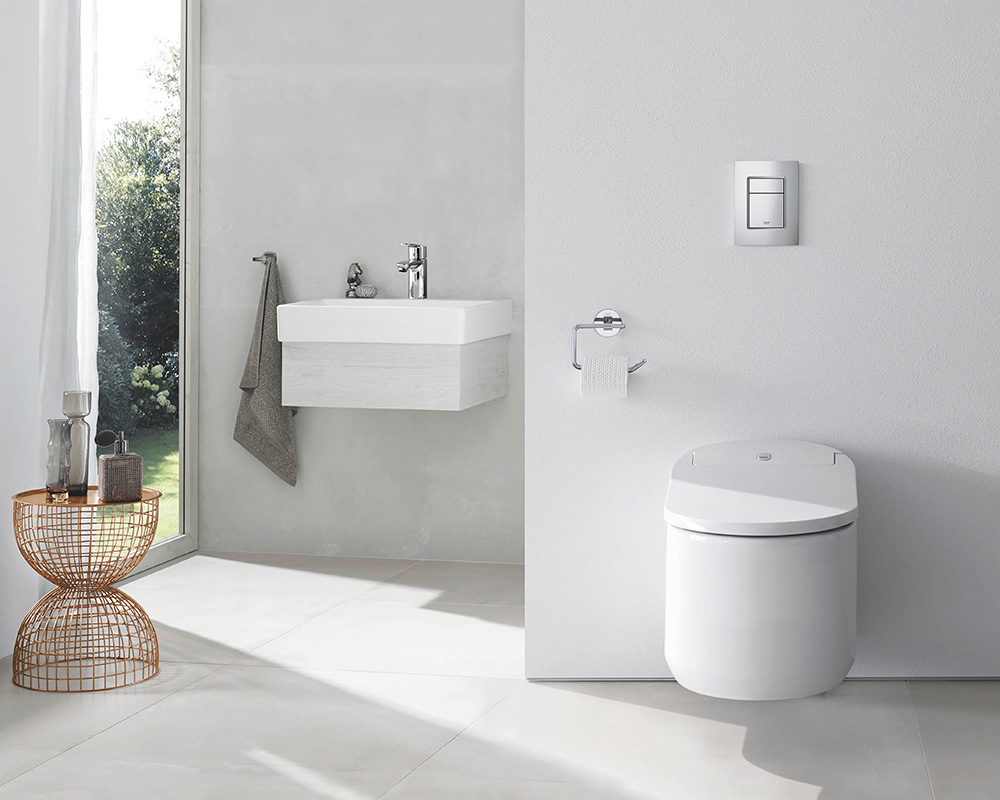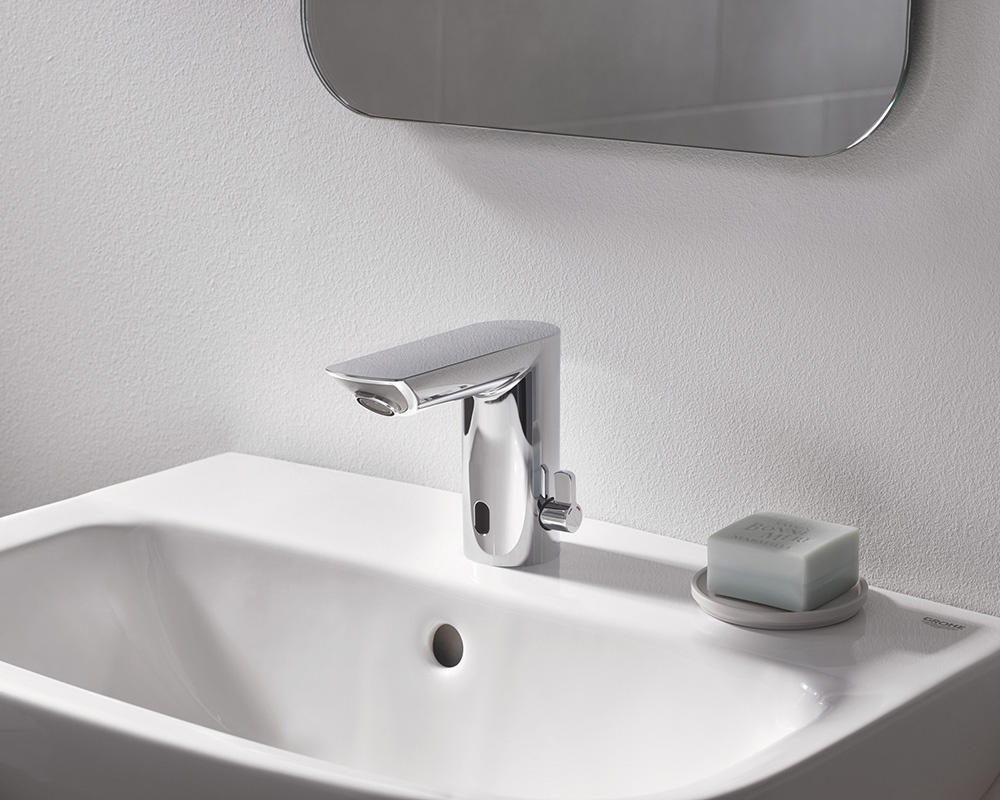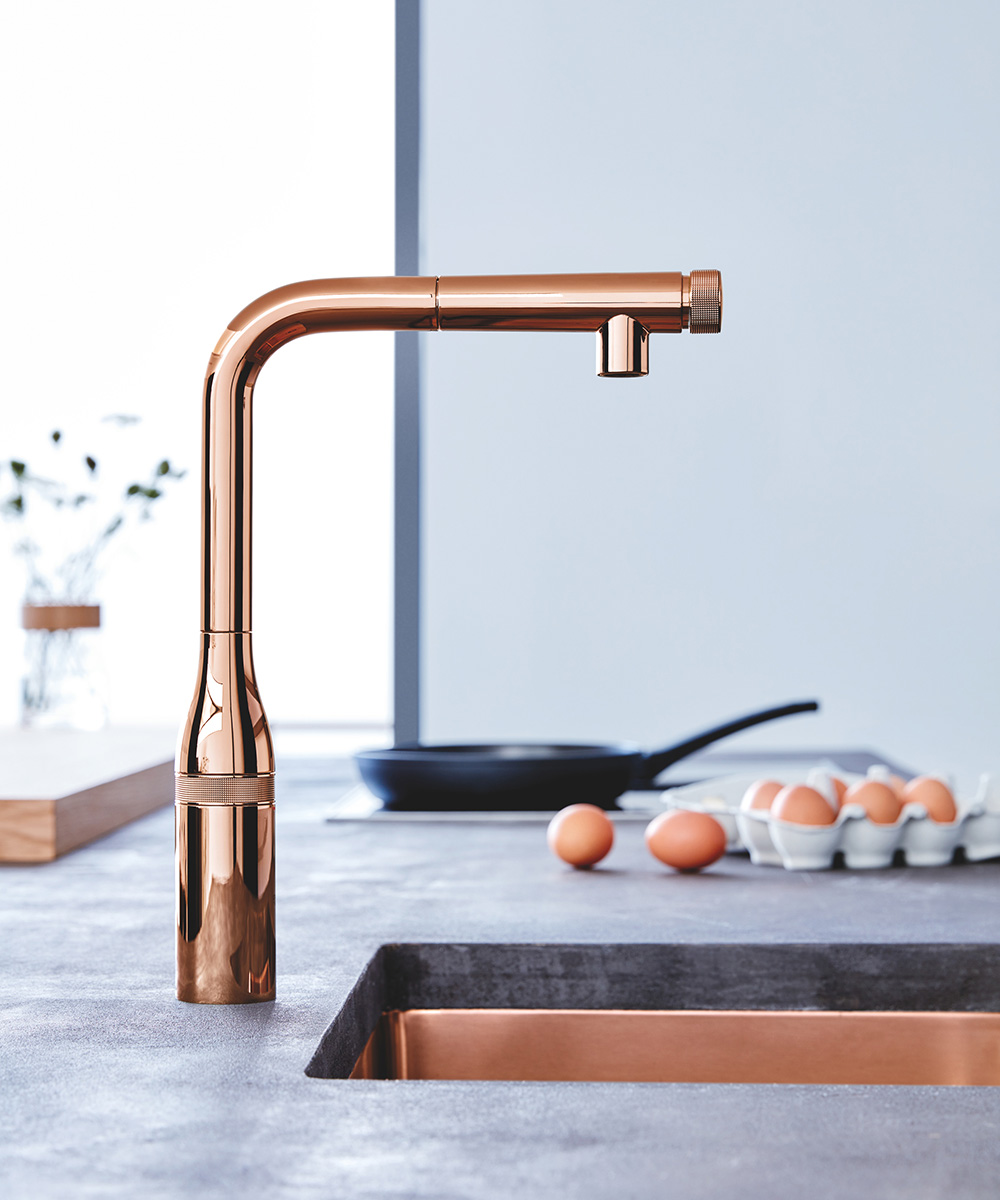The products that will help optimise hygiene in the home – designs for a post-pandemic world
The future is smart.

If you’re looking beyond lockdown and pondering how the interiors and design of our homes are going to change as a result of the COVID-19 crisis, then you’ve already probably considered the impact hygiene is going to have on how we interact with everyday items in our home. Here are some or our favourite ways to introducesmart technology in the home.
Since the beginning of this year, German bathroom and kitchen manufacturer Grohe,has already seen unprecedented demand for its infra-red touchless taps and ongoing enquiries and sales show this is a trend that is set to stay.
HYGIENE-FRIENDLY PRODUCTS FOR THE FUTURE
From anti-bacterial coatings on toilet bowls and being able to use the toilet completely hands-free to taps you can operate with your wrist, elbow or the power of infra-red technology: Grohe is leading the way with product design in the kitchen and bathroom that optimises hygiene through smart features and advanced technology.
1. SHOWER TOILET
Forget aggressive cleaning products or trying to disguise unsightly toilet brushes. Sensia Arena uses the combination of a rimless toilet design, a powerful Triple Vortex flushing system and a special anti-bacterial surface coating applied to the toilet bowl, shower arms and nozzle guards to eradicate dirt particles by making it difficult for them to stick to surfaces and leaving no hidden nooks for them to hide.
Meanwhile, the ion technology known as PlasmaCluster releases positive and negative ions into even the farthest hard-to-reach corners of the toilet bowl and in the air around the toilet to inactivate bacteria. Plus, thanks to a motion sensor, the Grohe Sensia Arena lid opens and closes automatically without the need to touch it whilst an automatic flush can also be specified on request for a completely touch-free toilet experience.

See:Is this the future of design? Grohe presents the first 3D metal-printed tap
Design expertise in your inbox – from inspiring decorating ideas and beautiful celebrity homes to practical gardening advice and shopping round-ups.
2. INFRA-RED BATHROOM TAP
Infra-red touchless tap technology has been even more accessible and affordable than before with Grohe’s Bau Cosmo E basin mixer taps. The Bau Cosmo E works using an infra-red sensor which starts and stops the flow of water when movement is detected within the sensor range. Not only does this help to reduce overall water consumption and wastage but it also helps to optimise hygiene in the bathroom as you don’t have to directly touch the tap’s surface to start the water or adjust the temperature.
Many of the models in the Bau Cosmo E range come with pre-installed programmes as standard, so that temperature is optimised for both safety and hygiene. A timer can also be programmed which automatically stops the water flow after a desired length of time to further reduce water wastage.

See:The future of home design in a post-pandemic world –how things will change
3. SMART KITCHEN TAP
With the SmartControl kitchen tap range, Grohe has replaced the standard kitchen tap lever with an intelligent, outward-facing button positioned at the end of the tap’s spout to create a completely new user experience. Perfect for when hands are full with pots and pans or unclean from preparing raw meat, the ergonomic design prioritises user-friendliness while also helping to reduce the spread of harmful germs and bacteria in the home.
With a simple push of the button which can be done with your wrist, forearm or elbow, the water can be instantly turned on and off. Once the stream of water has been activated, the volume of water – scalable from a water-saving eco-spray to a powerful jet-spray – can be adjusted smoothly and precisely with just a twist of the button, once you’ve rinsed your hands of course.

Hygiene-focused products have always been commonplace in commercial spaces (those we typically see in hotels, airports, shopping centres) but in the wake of COVID-19, Grohe forecasts that they will take hold in the consumer world too with home owners wanting to create a more hygienic, touch-free environment in their own homes.

Jennifer is the Digital Editor at Homes & Gardens, bringing years of interiors experience across the US and UK. She has worked with leading publications, blending expertise in PR, marketing, social media, commercial strategy, and e-commerce. Jennifer has covered every corner of the home – curating projects from top interior designers, sourcing celebrity properties, reviewing appliances, and delivering timely news. Now, she channels her digital skills into shaping the world’s leading interiors website.